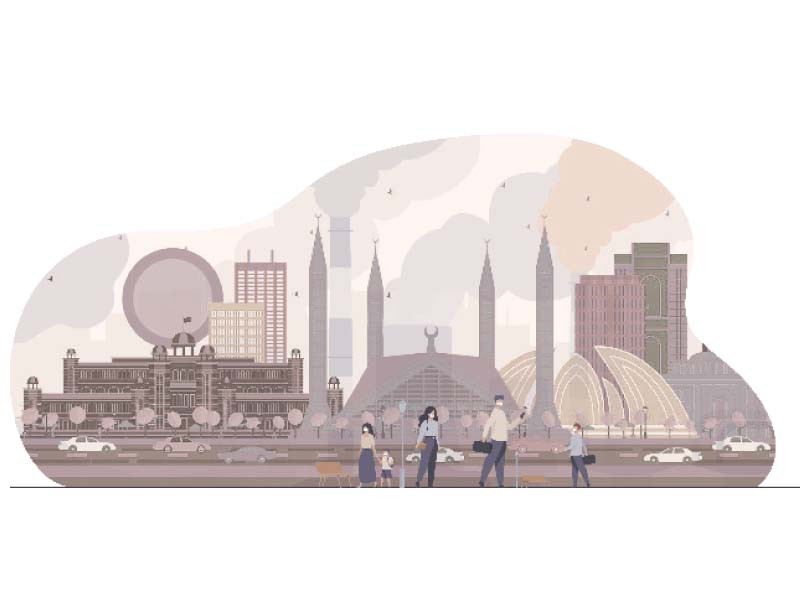
One of the drawbacks of continually extending the boundary of the federal capital is that its residents tend to forget that a significant chunk is rural Islamabad, which is neglected and polluted.
With the onset of the cold weather, smog engulfs Islamabad but most in the city centre do not realise this as the most affected areas like Bhara Kahu, Tarnol, Sihala, Golra Sharif, Tarlai, Jhangi Syedan, Rawat, Khanna, Nilore, and Sangjani are on the outskirts. Not only are these areas home to industrial activity and heavy smoke emitting vehicles, but due to lack of proper garbage disposal sites, the residents of these areas and factory owners burn their trash. Resultantly, the most recent air quality index reading (AQI) in these areas stands at 167 - classified as unhealthy air.
Shaan Zeb, a resident of Sihala which is home to the largest police training college in the country, termed all the steps taken by the administration of the capital to control pollution as non-existent. “Instead of urban areas of Islamabad, all traders, industrialists set up factories in rural areas and make life difficult for us,” he said. An irate Khawaja stated that the administration keeps saying they will close big polluters like brick kilns, but nothing happens.
Elsewhere in Bhara Kahu, Sharjeel Akhtar concurred with Khawaja’s assessment. “There were large forests in the suburbs which are being cut down to make space for housing societies for the elite or for factories,” Akhtar lamented.
When stone crushing machines and marble factories are allowed to be set up in these rural areas, they contribute to smog by releasing highly toxic substances into the air. Resultantly, cases of asthma, lung weakness, and other respiratory diseases are on the rise in people who live on the outskirts of the capital. Irshad Ramey, an environmentalist based in the city, when inquired about the rising illnesses due to unclean air, said, “there have not been any serious efforts to control any of the contributing factors to smog.”
Ramey, who heads an organization that advocates for cleaner air, while talking to The Express Tribune, stated that the concerned departments and authorities dispose off their duty by small awareness campaigns when the smog season starts in October or November. “Claims of remedial measures taking place by those in charge are empty and therefore this is a recurring problem every winter,” he said. Ramey opined that if the city’s administration took concrete measures and focused on making people’s lives better, smog could be eliminated in the next three years.
However, officials familiar with the matter stated that such work was already being done. Muhammad Ramzan, a senior legal expert working for the environment department in Islamabad, told The Express Tribune that in order to control smog, the authorities had sealed 35 non-zigzag kilns in Islamabad along with 27 stone crushing machines in Margalla Hills, and 39 smoke emitting factories.
Akhtar, who lives in Bhara Kahu, said that such claims are made every year by departments but not seen practically. “Breathing fresh air has become a luxury item that only the rich who live close to the Margalla hills are entitled to,” he told The Express Tribune.
Published in The Express Tribune, November 21st, 2021.


1725783822-0/Tribune-Pic-(15)1725783822-0-165x106.webp)















COMMENTS (1)
Comments are moderated and generally will be posted if they are on-topic and not abusive.
For more information, please see our Comments FAQ